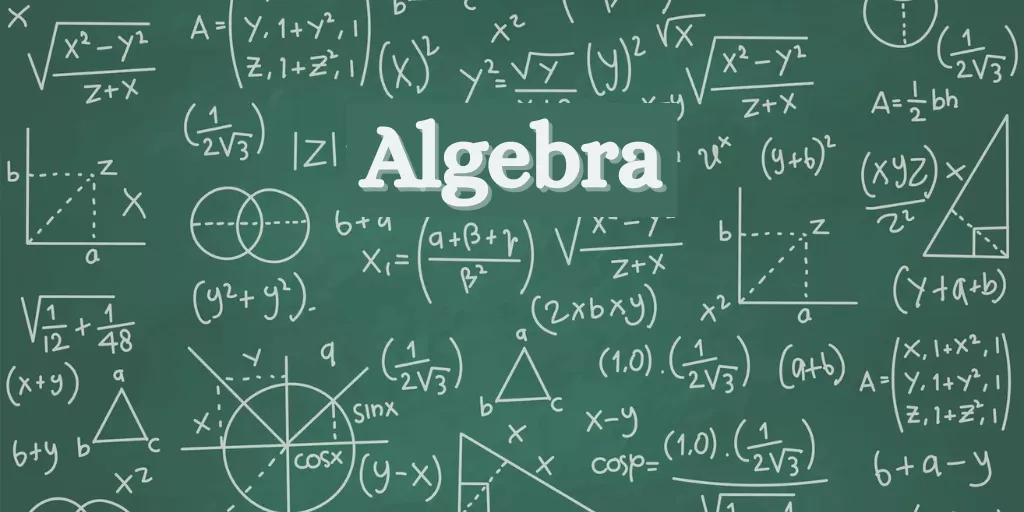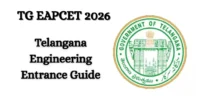Algebra is the foundation of higher mathematics, enabling us to represent real-world issues using symbols and mathematical notation. Understanding algebraic formulas, equations, and identities is essential whether you’re studying for a competitive exam or simply brushing up on your fundamentals!
What is Algebra?
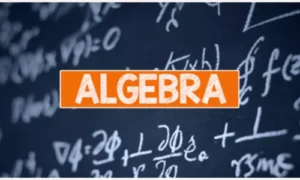
Algebra is a branch of mathematics that deals with symbols and the rules for manipulating them.
In simple words, it’s all about finding the unknown using the known.
Example:
- If x+5=9, then x=4x
- Here, x is the unknown value we found using algebra.
Types of Algebra
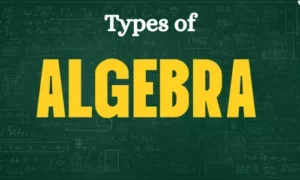
Algebra can be classified into numerous sorts based on its complexity and applicability.
1. Elementary algebra refers to the basic rules and equations utilised in school-level mathematics.
2. Abstract algebra focuses on algebraic structures such as groups, rings, and fields.
3. Linear Algebra focuses on vectors, matrices, and linear transformations.
4. Boolean Algebra – Used in logic and computer science, with values of TRUE (1) or FALSE(0).
5. Commutative Algebra focuses on commutative rings and algebraic geometry ideas.
Algebraic Expressions
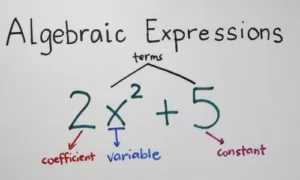
An algebraic expression is a combination of numbers, variables, and arithmetic operations.
Examples:
3x+5
4×2−3x+7
2a²b+3ab²
Each expression consists of terms, coefficients, and variables.
Algebraic identities
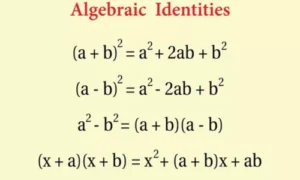
Algebraic identities are formulas that hold for all values of variables.
They speed up the process of simplifying and factoring expressions.
Common Algebraic Identities:
- a² – b² = (a-b)(a+b)
- (a+b)² = a² + 2ab + b²
- (a-b)² = a² – 2ab + b²
- a² + b² = (a-b)² +2ab
- (a+b+c)² = a²+b²+c²+2ab+2ac+2bc
- (a-b-c)² = a²+b²+c²-2ab-2ac+2bc
- a³-b³ = (a-b) (a² + ab + b²)
- a³+b³ = (a+b) (a² – ab + b²)
- (a+b)³ = a³+ 3a²b + 3ab² + b³
- (a-b)³ = a³- 3a²b + 3ab² – b³
- “n” is a natural number, and – bn = (a-b) (an-1 + an-2b +….bn-2a + bn-1)
- “n” is an even number, an + bn = (a+b) (an-1 – an-2b +….+ bn-2a – bn-1)
- “n” is an odd number an + bn = (a-b) (an-1 – an-2b +…. – bn-2a + bn-1)
- (am)(an) = am+n (ab)m = amn
Algebraic Operations
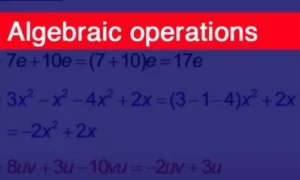
There are four major operations in algebra — similar to basic arithmetic, but involving variables.
Addition:
(3x+2)+(2x+5)=5x+7Subtraction:
(5x+4)−(2x+3)=3x+1Multiplication:
(x+2)(x+3)=x2+5x+6Division:
x²−9/x−3=x+3
These operations are used to simplify equations and solve unknowns.
Important Algebra Formulas
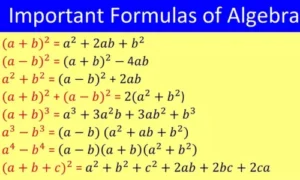
Here are some must-know algebra formulas for exams:
| Formula Type | Formula |
|---|---|
| Square of Sum | (a+b)² = a² + 2ab + b² |
| Square of Difference | (a-b)² = a² – 2ab + b² |
| Difference of Squares | a² – b² = (a-b)(a+b) |
| Cube of Sum | (a+b)³ = a³+ 3a²b + 3ab² + b³ |
| Cube of Difference | (a-b)³ = a³- 3a²b + 3ab² – b³ |
| Sum of Cubes | a³+b³ = (a+b) (a² – ab + b²) |
| Difference of Cubes | a³-b³ = (a-b) (a² + ab + b²)
|
Applications of algebra
Algebra is used in a variety of applications, including estimating commercial earnings and addressing scientific difficulties.
- Here are a few practical applications:
- Calculating Distance, Speed, and Time
- Designing algorithms for programming
- Managing money and investments
- Analysing data and statistics
Conclusion
Mastering algebra is equivalent to understanding a universal language of logic and problem-solving. Once you learn the fundamental formulae, identities, and operations, you will be able to solve even the most complex equations confidently.
So, begin practising algebra daily, because it serves as the foundation for all competitive exams and logical subjects that follow!


